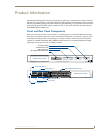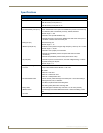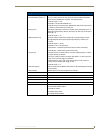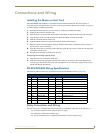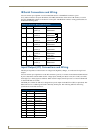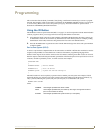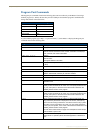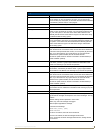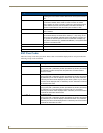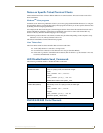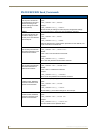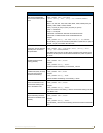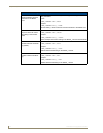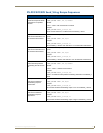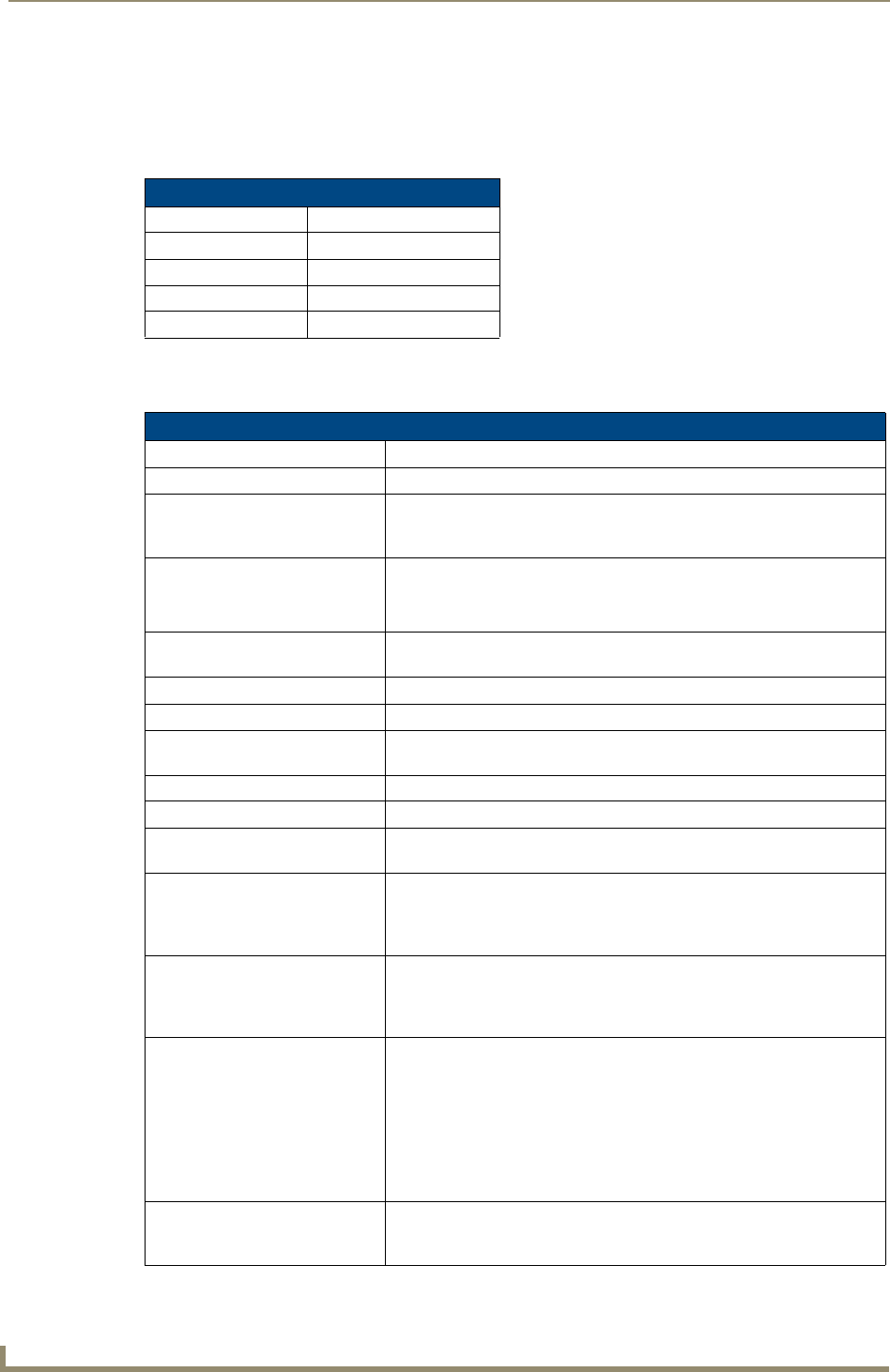
Programming
8
NXI NetLinx Integrated Controller
Program Port Commands
The Program port commands listed in the following table can be sent directly to the Master Card using a
terminal program (i.e. Telnet). Be sure that your PC's COM port and terminal program's communication
settings match those in the table below:
In your terminal program, type "Help" or a question mark ("?") and <Enter> to display the Program port
commands listed in the following table.
PC COM Port Communication Settings
Baud 38400 (default)
Parity None
Data Bits 8
Stop Bits 1
Flow Control None
Program Port Commands
Command Description
DATE Displays the current date and day of the week.
DEVICE STATUS <D:P:S> Displays a list of all active (on) channels for the specified D:P:S. Enter
DEVICE STATUS without the D:P:S variable, the Master Card displays
ports, channels, and version information.
DNS LIST <D:P:S> Displays:
• Domain suffix
• Configured DNS IP Information
DOC FREE Displays the total bytes of free space available on the Master Card's Disk
on Chip.
ECHO OFF Disables terminal character's echo (display) function.
ECHO ON Enables terminal character's echo (display) function.
GET IP <D:P:S> Displays the Master Card's D:P:S, Host Name, Type (DHCP or Static), IP
Address, Subnet Mask, Gateway IP, and MAC Address.
MEM Displays the largest free block of Master Card memory.
MSG OFF MSG OFF disables the MSG ON display (see below).
MSG ON MSG On sets the terminal program to display all messages generated by
the Master Card.
OFF Turns off a channel on a device. The device can be on any system the
master you are connected to can reach. You can specify the device num-
ber, port, and system, or the name of the device that is defined in the
DEFINE_DEVICE section of the program.
ON Turns on a channel on a device. The device can be on any system the
master you are connected to can reach. You can specify the device num-
ber, port, and system, or the name of the device that is defined in the
DEFINE_DEVICE section of the program.
PASS Sets up a pass through mode to a device. In pass through mode, any
string received by the device is displayed on the screen, and anything
typed is sent as a string to the device. The device can be on any system
the master you are connected to can reach. You can specify the device
number, port, and system, or the name of the device that is defined in the
DEFINE_DEVICE section of the program.
See ESC Pass Codes section on page 10 for descriptions of the escape
codes available in pass mode.
PING Tests network connectivity to and confirms the presence of another net-
worked device. It operates just like the PING application in Windows or
Linux.




